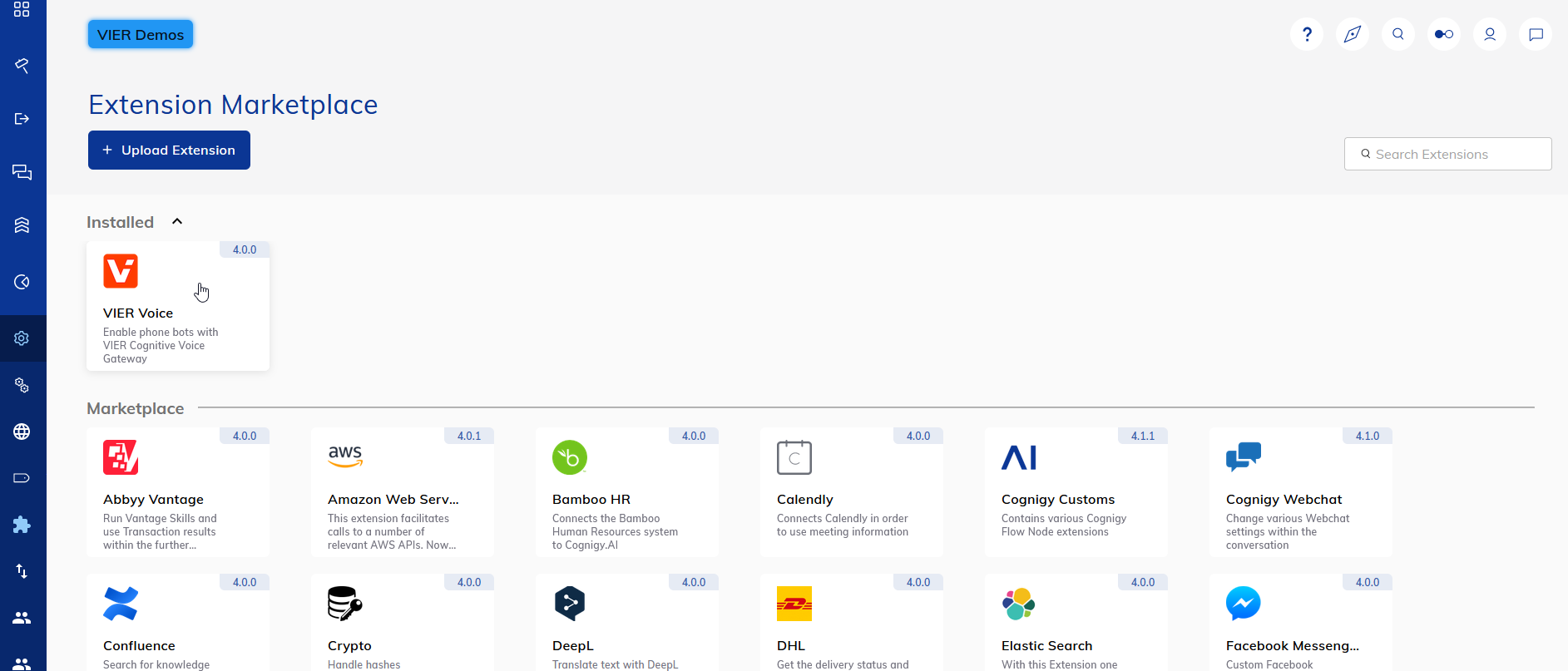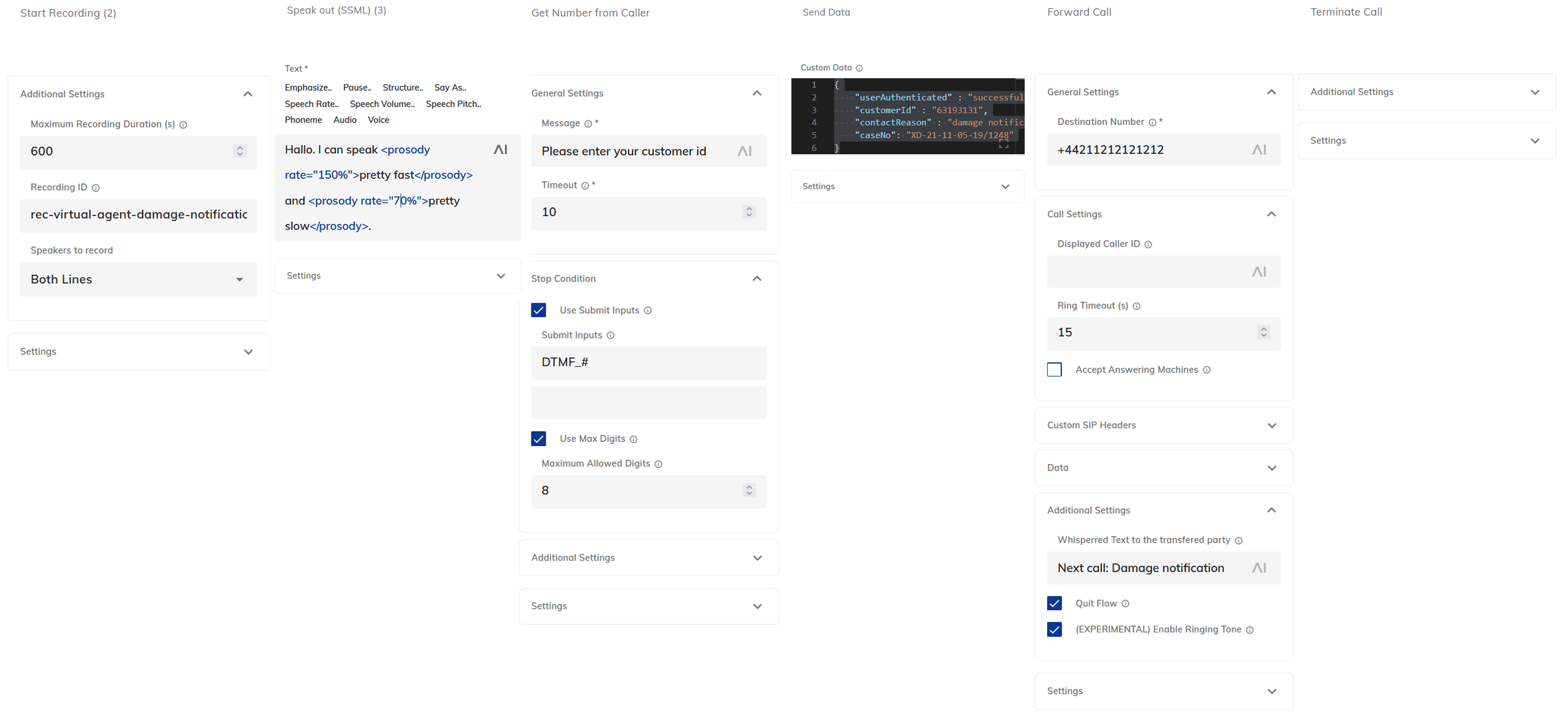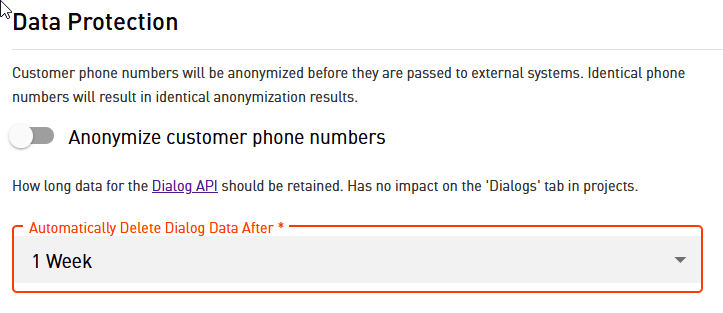CVG 1.16.0 (04-Nov-2021)
We are pleased to announce that voice user experience designers and bot developers using Cognigy can now develop phonebots significantly easier. The VIER Voice Extension for Cognigy provides a set of nodes for call control. This includes, among other things, starting/stopping call recordings, playing audio files, or forwarding to a human agent. You get this VIER Voice Extension in the Cognigy Marketplace.
In addition, there are fundamental improvements in some core “Voice” features.
Barge-in, i.e. interrupting a bot announcement, now only takes effect if voice input has actually been detected. This means that background noises such as honking, barking, fire department sirens or even the clattering of the keyboard no longer lead to false interruptions. The user experience can thus be significantly improved.
For texts that are output with SSML, it is no longer necessary to distinguish whether the TTS engine is used by Microsoft or by another manufacturer. This is because we have made the specification of a “voice”, which is only necessary with Microsoft, superfluous. In addition, we have further improved the handling of long texts containing SSML tags, so that the length limits of the individual TTS engines no longer play a role.
Inbound DTMF signals are now routed to calls forwarded via /call/forward or /call/bridge.
And finally, the retention time of dialog data in CVG (previously fixed at 10 minutes) can now be configured to allow e.g. 3rd party reporting systems of our customers to fetch this data once a night.
Have fun building great voicebots!

Cognigy Extensions
CVG is the basis for building voicebots and phonebots with Cogniy’s Conversational AI platform. With the growing market success of both VIER CVG and Cognigy, we have been repeatedly asked to make it even easier for voice user experience designers and bot developers to develop voicebots.
We have therefore developed the VIER Voice Extension. This extension, freely available in the Cognigy marketplace, provides a set of nodes that can be used in Cognigy’s flows for call control.

Accounts for CVG and Cognigy needed
To use the VIER Voice Extension for Cognigy, you need an account for both Cognigy and CVG.
The image below shows a few VIER Voice extension nodes in Cognigy’s flow editor.

Improved Barge-In
Sometimes you want to allow callers to barge in while the bot is saying something. For example, the bot announces a list of possible questions or answers, and callers should be able to interrupt and move on to the appropriate action without having to wait for the announcement to end.
Until now, any audio signal, as long as it was loud enough, already led to a barge-in. This had the advantage that an announcement was stopped very quickly. However, loud background noises such as passing cars, barking dogs or ringing tones led to false barge-ins. Such false barge-ins then often led to misunderstandings between caller and bot.
We have therefore changed the barge-in behavior so that a running announcement is only interrupted when a voice input - or a DTMF input - is detected. Now the announcement is interrupted a bit later, but false barge-ins are largely avoided.
By default, callers cannot interrupt a /call/say or a /call/play output. If you want to enable barge in, set the parameter bargeIn to true when requesting /call/say or a /call/play endpoint.
Improved SSML support
With the help of SSML tags, it is possible to make TTS voices sound more lively by changing characteristics such as volume and speaking rate, or by adding accents as well as pauses. Due to the increasing use of SSML in voicebots built with CVG, we have made further improvements here.
Voice Tag Injection for Microsoft TTS
Micrsoft’s TTS engine is the only one that requires the voice element in an SSML document. CVG does this tedious work for you: if no voice element is specified in the SSML document, the voice set in the corresponding CVG project is automatically injected.
Recommendation
We recommend to leave out the `voice` element when using SSML and the Microsoft TTS. This is because this `voice` element is not understood by other TTS engines and leads to empty or incorrect voice output if a different TTS engine is set in the CVG project.
Improved Splitting of long Texts
The different TTS engines have different limitations regarding the maximum number of characters. Sometimes voicebots want to output longer texts. CVG therefore splits such long texts so that the bot developers do not have to worry about such length restrictions. This splitting is also done for SSML documents, but in some edge cases the split output was still too long. We have now improved this.
Configurable Retention Time for Dialog Data
Previously, CVG retained dialog data for only 10 minutes after the end of each dialog. This is sufficient, for example, to transfer dialogs to contact center services where they are displayed to the human agent after a handover.
However, in certain uses cases our customers require a longer retention time of the dialogs. E.g. because all dialogs should be fetched once a night into reporting or analytics systems. To make this possible, we have enabled a maximum retention time of 1 week. This retention period for dialog data is limited by the reseller, the customer, the account and the project.

Contact us if you want to set a hold time of e.g. 1 week, but this is not yet possible with the existing configuration of your project.
DTMF Signal Routing to forwarded Calls
Usually the forwarding of calls to external destinations via /call/forward or /call/bridge is used for an agent handover. In this case, entered DTMF signals do not play a role.
Sometimes, however, the call is forwarded to an IVR system that expects DTMF input. To support this use case as well, CVG now routes DTMF signals on the original line to the target system.
Fixed Bugs
DTMF Tones as Inputs during Call Forwarding
No DTMF tones are now transmitted to the bot while the call is forwarded to another destination via /call/forward or /call/bridge.